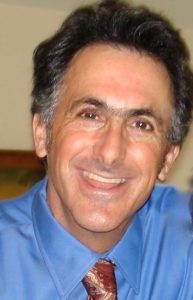David Hastings, climate scientist
When I first moved to Florida from Seattle, I would escape to the cool Pacific Northwest in the summer for a few weeks of respite from the sweltering heat.
Now, my friends in Seattle are trying to figure out why their A/C isn’t working properly, when in fact, the system is not designed to cool down the scorching hot air down to something bearable.
In late June, the Pacific Northwest was trapped beneath a blistering heat dome, a large region of high pressure with extreme heat, drought and increased fire danger. This event would not have been as shockingly severe without our interference with the climate system.
A few hundred miles south, the normally temperate city of Portland got a temperature shock typically expected every thousand years. Portland broke an all-time record temperature of 108o on Saturday, climbed to a scorching 112o on Sunday, then broke the record a third time on Monday at 116o, hotter than it has ever been in Dallas, Miami or Los Angeles. Streetcar power cables melted and the pavement buckled in the heat. The systems are not designed for record heat.

Extreme heat is a serious public health hazard. It’s not just uncomfortable, it can be deadly. Early estimates are that many more people died during the heat wave than usual. On a typical day, Vancouver responds to three to four sudden deaths. During last week’s heat wave, city officials responded to 98 sudden deaths over the four-day period, with 53 on Tuesday alone – two-thirds over 70 years old.
Extreme heat is colorless, odorless, and silent; the health consequences seem abstract until the heat arrives in your town. In the United States, extreme heat is among the deadliest type of weather event. About 12,000 Americans die each year of heat-related causes.
Heat waves are becoming more frequent, according to the EPA, lasting longer and occurring earlier. Outdoor workers are particularly at risk, along with older people, those experiencing poverty, and anyone without adequate shelter or access to air conditioning.
The elderly are especially vulnerable: more than 80% of those dying from heat-related illnesses are over 60. Even healthy seniors are less able to sense heat or sweat. Seniors are less able to feel thirst compared to younger adults and don’t tend to seek out liquids to rehydrate.
Severe heat waves not only harm people, they also pose a challenge for power grids. Rising temperatures can reduce the efficiency of fossil-fuel generators, transmission lines and solar panels precisely when demand increases.
How can we reduce these heat deaths? Public health experts say that the best defense against heat is social connection, especially for older adults. This means family, friends and neighbors checking on each other to stay safe.
Adding trees and shade in neighborhoods without shade helps cool the environment 2° to 9° and is a promising strategy, but is clearly not enough to fully deal with dangerous heat. Funding to assist residents who lack air conditioning or who need help with utility bills can also help.
In the end, fixing the root climate problem is the most effective. While we cannot eliminate all climate impacts, we can limit the worse ones.
As you read this, Congress is debating an infrastructure package called the American Jobs Plan. It is a big package of investments; the climate provisions are critical.
In Florida we are most at risk for dangerous heat fueled by climate change compared to other states. We are projected to see the biggest increase in its extreme heat threat of any state by 2050, and yet our state is poorly prepared for this risk.
For example, in Orlando, historically we have 3 days per year with a heat index over 105°. Heat index is a combination of temperature and humidity – what it “feels like.”
If we continue to do nothing about climate, by mid-century we are projected to have 61 days over 105° in Orlando, and by late century over 112 days greater than 105°. However, a study by the Union of Concerned Scientists reveals that if we take bold action to reduce greenhouse gases, like the plan proposed by the administration, extreme heat is projected to be limited to 39 days, a big improvement.
To avoid more deaths from extreme heat, we need to switch to clean power.
We do not want to see more tragedies unfold. Passing the infrastructure package now is the one shot that we have to enact climate legislation to prevent even more dangerous heat waves.
David Hastings is a climate scientist and retired professor of oceanography. He recently moved to Gainesville.
This essay was first published in The Gainesville Sun.
“The Invading Sea” is the opinion arm of the Florida Climate Reporting Network, a collaborative of news organizations across the state focusing on the threats posed by the warming climate.



